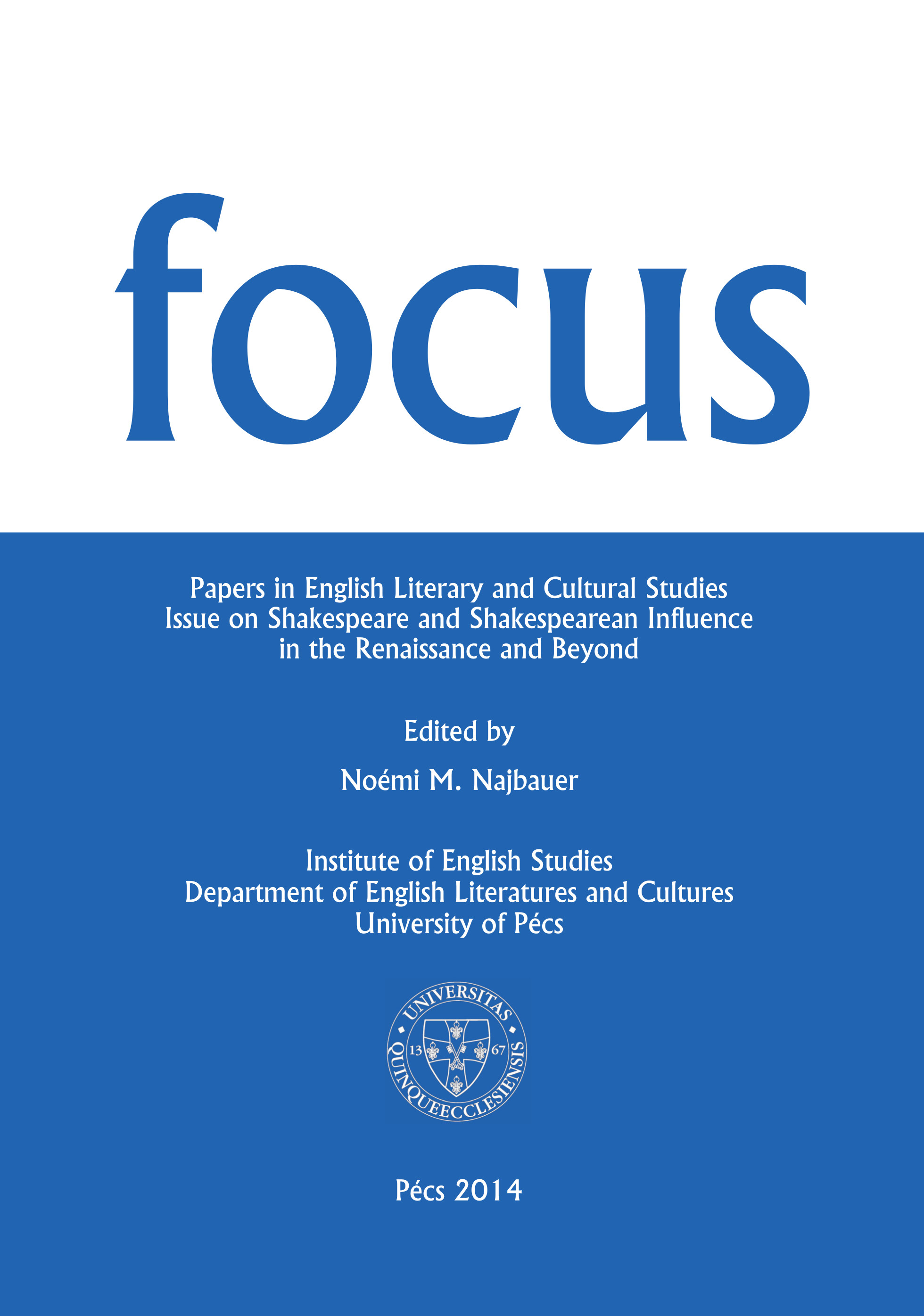William Kemp, Shakespeare’s Star Comedian, Morris Dancers, and Robin Hood: Emblematic Images of the Body
Keywords:
William Kemp, Shakespeare, Morris dancers, Robin Hood, Popular CultureAbstract
William Kemp, the acrobatic Morris dancer, and Shakespearean comic star, and the historical and emblematic figure of Robin Hood and his legend—along with the methods of communication they represented—had symbolic significance in early modern popular culture. Kemp and the figure of Robin Hood share many characteristic features: their expressive dancing and fighting, the gestural, spontaneous genres of contemporary entertainment they purposefully chose, the oral, popular culture they represented, and their unique physical appearance. We can glean information about the above-mentioned communicational forms from the following invaluable visual sources: the Tollet window, the front page of Kemp’s diary, Nine Daies Wonder, and several illustrations of the ballads of Robin Hood. We can also find the mainstream of the Robin Hood tradition that Kemp also represented: comedy, parody, transgression, and farce. These genres are intimate and dynamic parts of medieval ballads and popular films as well. In my essay, I aim to highlight the Robin Hood that Kemp might have embodied in his performances.
Downloads
Published
How to Cite
Issue
Section
License

This work is licensed under a Creative Commons Attribution-NonCommercial-NoDerivatives 4.0 International License.
FOCUS: Papers in English Literary and Cultural Studies follows the principles laid down by Creative Commons, which provides guarantees for the Author’s copyright while also ensuring that intellectual properties are made available for the wider public in a digital form. All papers submitted to the journal apply the following licence conditions (indicated on the journal’s website as well as in individual publications):
“© This work is licensed under a Creative Commons Attribution-NonCommercial-NoDerivatives 4.0 International License.”
You are free to:
- Share, copy and redistribute the material included in the journal in any medium or format under the following terms:
- Attribution — You must give appropriate credit to the Author, and indicate the original place of publication [FOCUS: Papers in English Literary and Cultural Studies, Issue nr., page numbers.].
- NonCommercial — You may not use the material for commercial purposes.
- NoDerivatives — You are not allowed to remix, transform, or build upon the material.
- The above conditions must always be indicated if the journal material is distributed in any form.
- The above conditions must always be met, unless a written permission signed by the Author and the Editor-in-Chief states otherwise.

